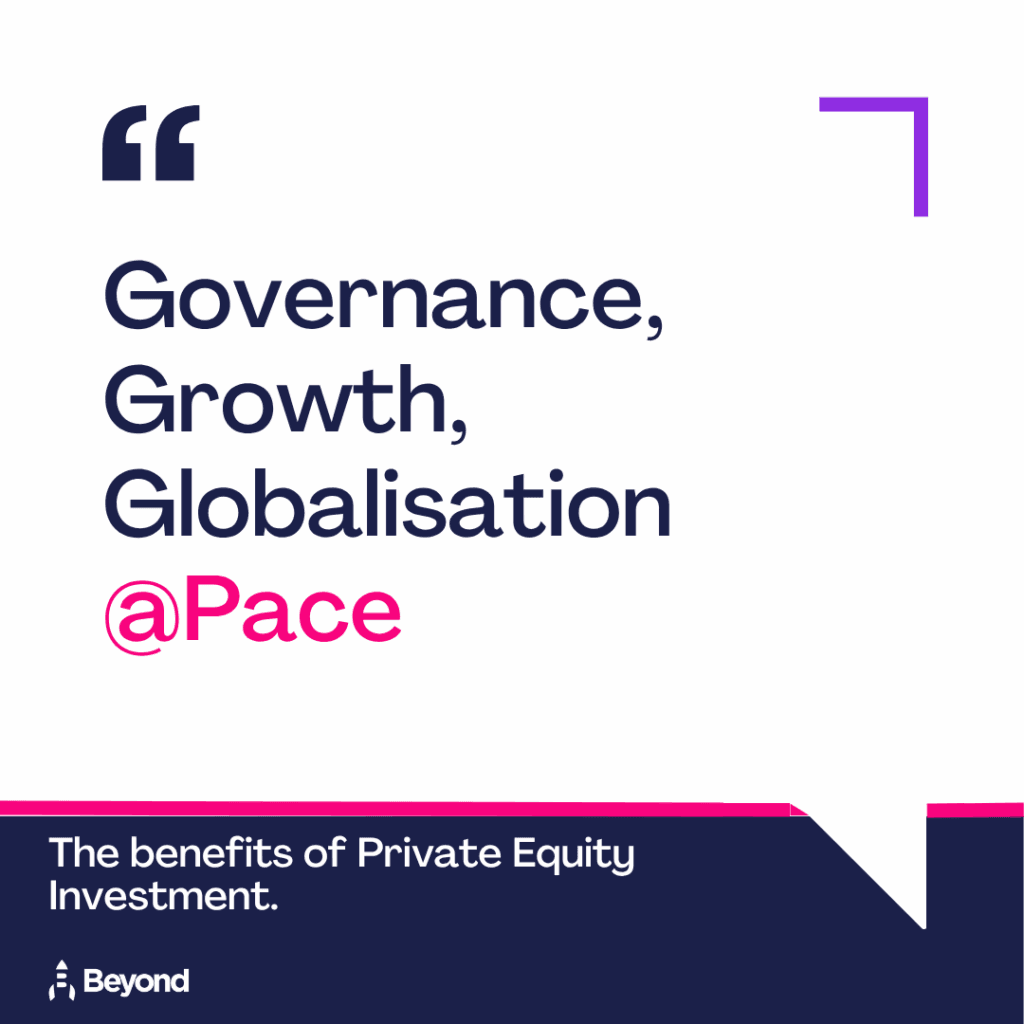When we work with founders and management teams during tech due diligence, we often discuss how to navigate the process. But what doesn’t get said enough is what happens after the deal is signed.
Last week, we explored the Three Cs—communication, consistency, and care—the foundational behaviours needed to get through diligence and present your business at its best. But once the ink is dry and the champagne’s been popped, the game changes.
That’s when the Three Gs arrive: Growth, Governance, and Globalization.
And they come fast.
What Are the Three Gs?

Let’s break them down:
1. Growth
This is what investors paid for. They want to see your numbers go up—and not just by accident. They’re expecting repeatable, predictable scale. The challenge is that the informal processes that helped you grow to this point likely won’t carry you through the next phase.
Growth now needs to be designed. Forecastable. Investable. And above all, faster.
2. Governance
This is where many teams trip up. Because while you’re being asked to go faster, you’re also being asked to control more. That’s a paradox, and if you don’t recognise it early, it can create real drag.
You’ll need to demonstrate financial discipline, clean data, compliance, and structured reporting. In short, you’re moving from founder-led gut decisions to board-level strategy and audit-ready operations.
3. Globalization
Even if you don’t cross borders tomorrow, you’ll be expected to think with a global mindset.
That means scalable systems, international readiness, local compliance knowledge, and customer experience at scale.
For many teams, this is the first time they’ve had to think about what it means to operate like a much bigger company.
The Transition Period: Your Crucial 90 Days
The first 2–3 months post-deal are a sweet spot—momentum is high, support is strong, and expectations are freshly set. Use this window to shift gears and reframe your business through an investor lens. Here are three real-world examples of how to do that:
📌 1. From “Fix It Later” to “Fix It Now”
Pre-deal, it was easy to defer ops work in favour of client delivery. Post-deal, that attitude will kill you. Investors will want to see an immediate roadmap to stabilise the back office—things like DevOps maturity, documentation, audit trails, HR processes, and financial controls.
Example: One company we worked with the CTO wanted to leave soon after the deal; there were so many things to remediate after the deal and a lot more scrutiny. Within three months, their investor praised them as “the most investor-ready business in the portfolio.” Little did they know….
📌 2. CEO as Architect, Not Just Operator
Founders often find themselves stuck in the weeds post-deal. But investor-grade CEOs shift their posture quickly—they delegate operational grind and focus on systems, market strategy, and team structure.
Example: After a majority deal, one CEO restructured their leadership team in the first 30 days, bringing in a COO and a fractional CFO. This let them focus on strategic expansion while ensuring daily delivery stayed solid. Letting go is hard but necessary.
📌 3. Go-To-Market Engine Overhaul
Growth post-deal is rarely just “do more of the same.” It often means rethinking your GTM entirely—better data pipelines, more disciplined pipeline forecasting, and performance-based marketing.
Example: A Series B SaaS team replaced their founder-led sales process with a repeatable playbook, including CRM rebuild, sales enablement, and cohort-based onboarding. They doubled ARR in 9 months and hit their investor’s Year 1 target a quarter early. However, I recently heard that they encountered other problems because they didn’t take the investor’s advice and expand their marketing channels. They paid for this dearly when Google made changes to their algorithm.
Get Ready For The Increased Pace + Governance!
The deal is not the finish line—it’s the starting gun. And what follows is faster, more complex, and more demanding. But it’s also the fun part—where real scale happens.
The Three Cs help you present your business.
The Three Gs help you transform it.
The trick? Accept that governance is your new superpower, not your red tape. Build for growth with controls in mind, and you’ll find the acceleration you’re looking for.




